Heads up! This post contains affiliate links. Learn more.
Whether you’re a new teacher or a seasoned one, the first day of school is always one day us teachers put the most thought into. So many things to prep, plan and think about.
The kids are full of nerves, excited to see their old friends and meet new ones. Everything feels new and everything feels like a fresh start.
With all this to consider, the first day of art class can sometimes be a little chaotic when you’re establishing your new ground rules and explaining where and how things will be.
That being said, with all that explaining (from all their teachers) sometimes the first day can feel boring to kids if not actually making or doing something engaging.
So to remedy any yawning faces it’s always a good idea to get stuck into making something with the students so they can see for themselves just how much fun there is to be had in art class with you.
If you’re stuck for ideas, here are some quick and easy first day of school art project ideas that are sure to be a hit with your young kids, to get your new school year off to a great start.

How do I start teaching art to kids on the first day?
Greet the children with a smile
As the kids walk into the classroom. Quietly stand at the front of the room with a friendly face until they have found a seat and have stopped talking. This immediately allows them to become aware of your positive demeanour and their own behaviour.
In a low speaking voice, welcome the children
Introduce yourself and let them see how excited you are to start a year of art with them.
Explain your class rules – but keep it brief!
No one wants to hear you drone on for ages about your rules. Chances are they’ve been sitting through rules all day long already in other classes. Now’s your chance to show them right away that art class is a great place to relax and let loose. Set the rest of your expectations by demonstrating your rules during the class time.
Get stuck into an art lesson right away!
Present your idea, let them know where they can find materials, and demo the procedures if necessary. I like to keep it simple with materials that are easy to use and quick to clear up. Think simple drawing materials like pens, pencils, colour pencils, markers etc.
Observe the children while they are working away
This is a prime opportunity to observe all the students before making any seating arrangements. See how they behave, how they treat the materials and the classmates near to them. You can also use this as an opportunity to assess your students abilities.
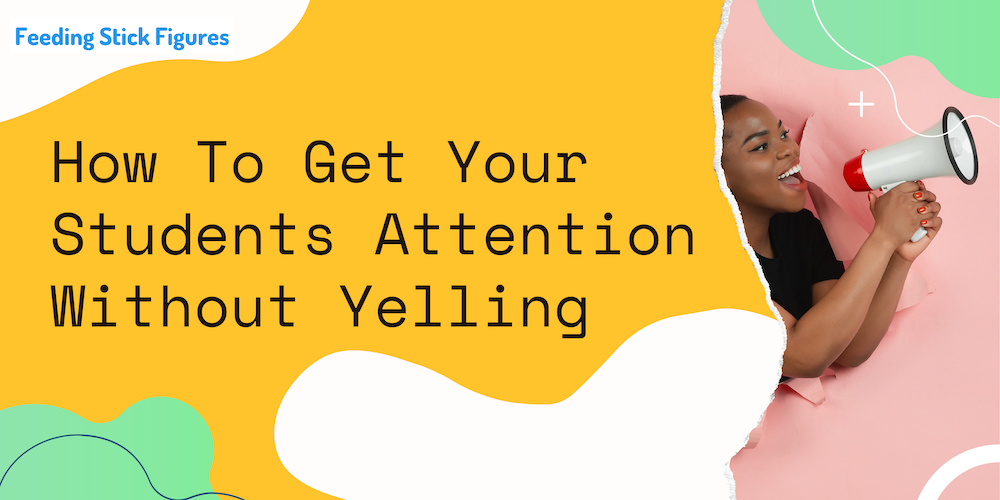
My 6 Classroom rules & expectations
It’s important to establish your expectations on the first day before they start making any artwork in your classroom. This leaves them with a clear understanding of how things will operate going forward in your class. Perhaps you have your own class rules and general expectations, here are mine:
- Have fun exploring the art we make and remember to turn ON your creativity on at the door
- Try your best even if you don’t usually “like” art
- Don’t be afraid to make mistakes, you never know what it might turn into
- When I clap my hands loud 5 times… that means, STOP, LOOK & LISTEN
- You are free to talk to each other with indoor voices, but never while I’m talking incase you miss crucial information.
- Help each other to come up with creative ideas, to find courage, to clean up the classroom.
Back to school art ideas for kids with simple materials
I personally don’t like to take the paints out on the first day, because I find that a lot of kids don’t really know how to respect the paint materials yet. It can take a good amount of time to demo how to use the brush correctly, how much paint to use, how to clean the brush, mix colours, and clean up afterwards.
Instead, get them to use simple, easy to clear away materials like coloured pencils, crayons, oil pastels, or even some collage for the first few days.

1. ‘Pass the Pen’ Art Game
This is a great art game ice breaker and collaborative group activity. The energy in the classroom can get real high on this one! My students always request time to play this. Find out how to play.
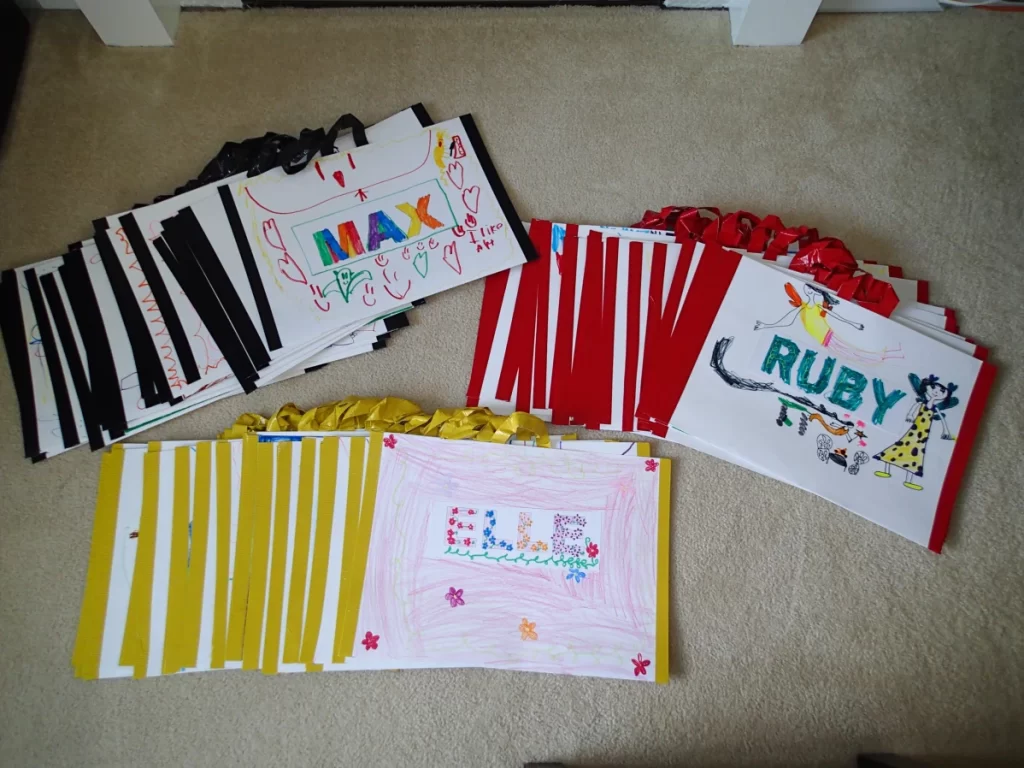
2. Make and decorate an art portfolio to collect future projects
Using 2 pieces of large A2 paper, either you or them can staple the sheets together before getting the students to decorate it with their names and other designs that represent them.
Tip! Use different colour paper for each year group or class portfolios. This helps the kids throughout the year to know their designated colour to put completed projects in and gets you organised right off the bat.
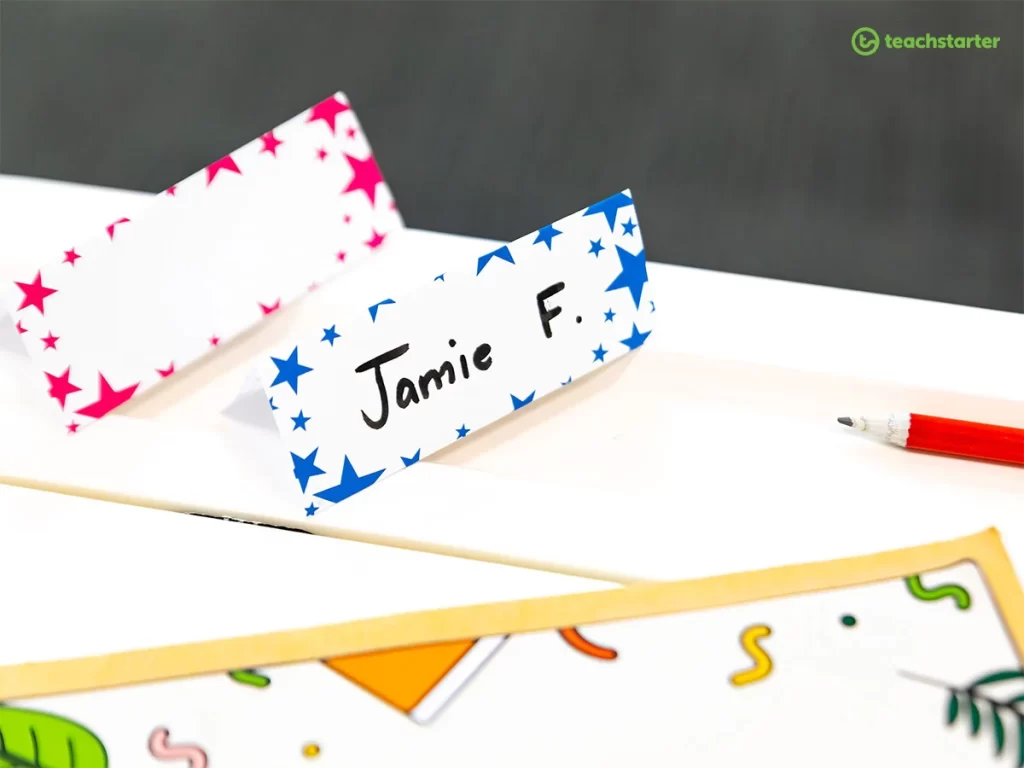
3. Create and design name tags for their desks, lockers, or drawers
Get the students to try their hand at designing their own font and write their name on a strip of card stock and decorate.

4. Create a paper collage
Get all your unused tissue paper, magazine, and colour paper scraps from last year and direct them to only use the paper to create a picture. I find that given simple imagery like flowers is great. No drawing or pre-planning. Just cut and stick relevant shapes to create your ideas.
5. Self Portrait Drawings
With minimal instructions let them draw themselves or a partner. This way you can take mental notes of who already understands portraiture, and their skills in drawing etc. If you repeat this activity at the end of the year, it’s a great before and after marker when you assess their skill development by the end of the year. They love seeing how far they’ve come too.
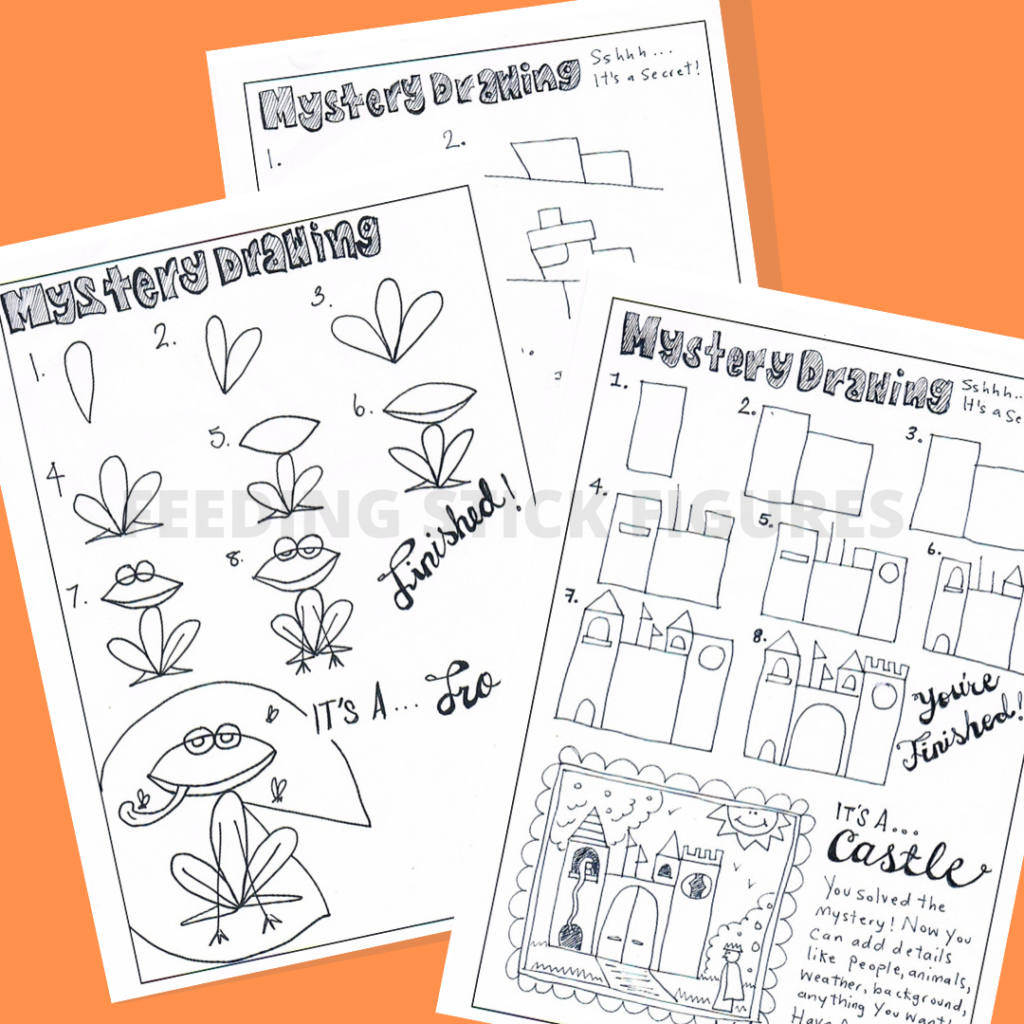
6. Directed Drawings
Any primary (elementary) school kid will enjoy a directed drawing activity like my Mystery Drawings. The aim is to keep the final image in your mind and draw it step by step on the board while they follow along, drawing with you. The kids will have no idea what they are drawing and can have fun guessing along the way until the final picture is revealed. Their energy gets pretty high with this one too!
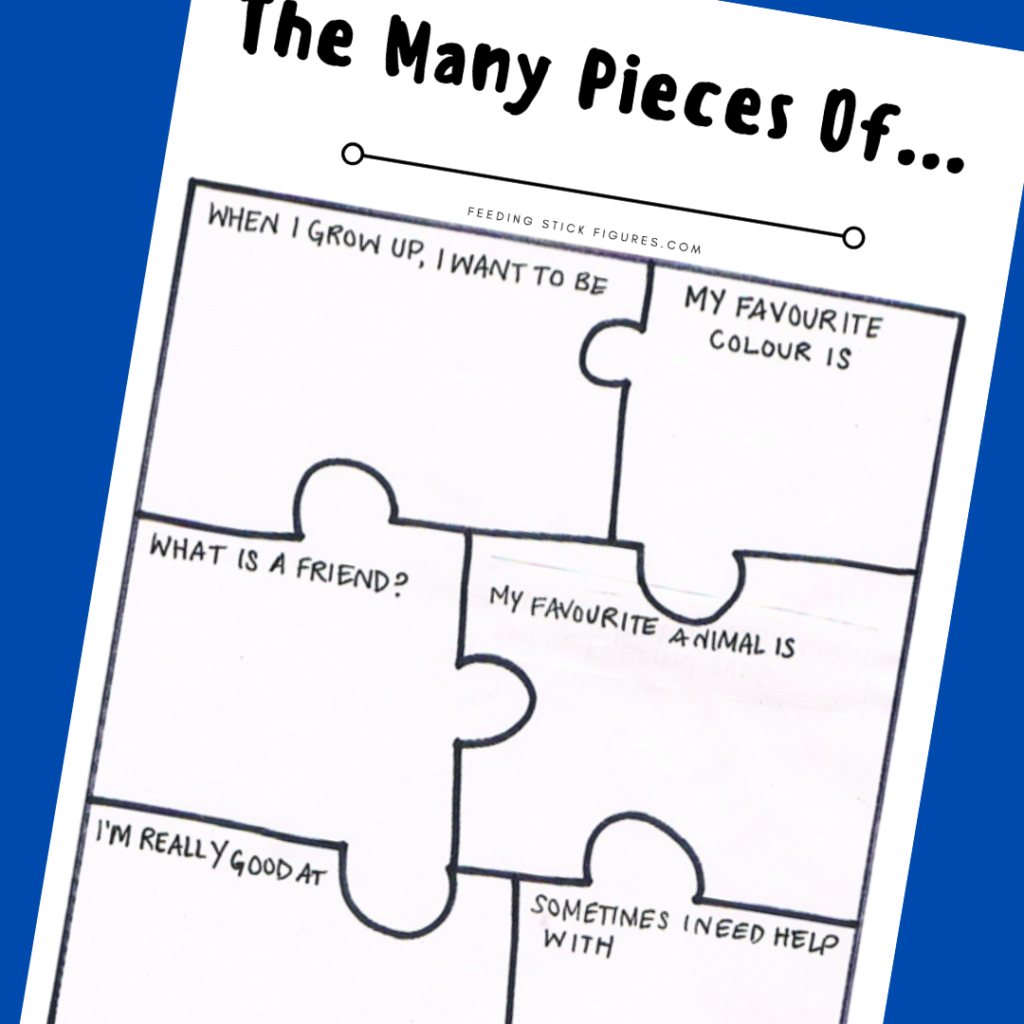
7. Get to know your students activity sheet
A good little writing activity for when kids are finished early or have some extra time before the end of class is this printable Pieces of Me Activity Sheet. You can either get the students to fill it out themselves, or let them select a partner to fill out each others. This little activity is a great way help you get to know a bit more about your students.
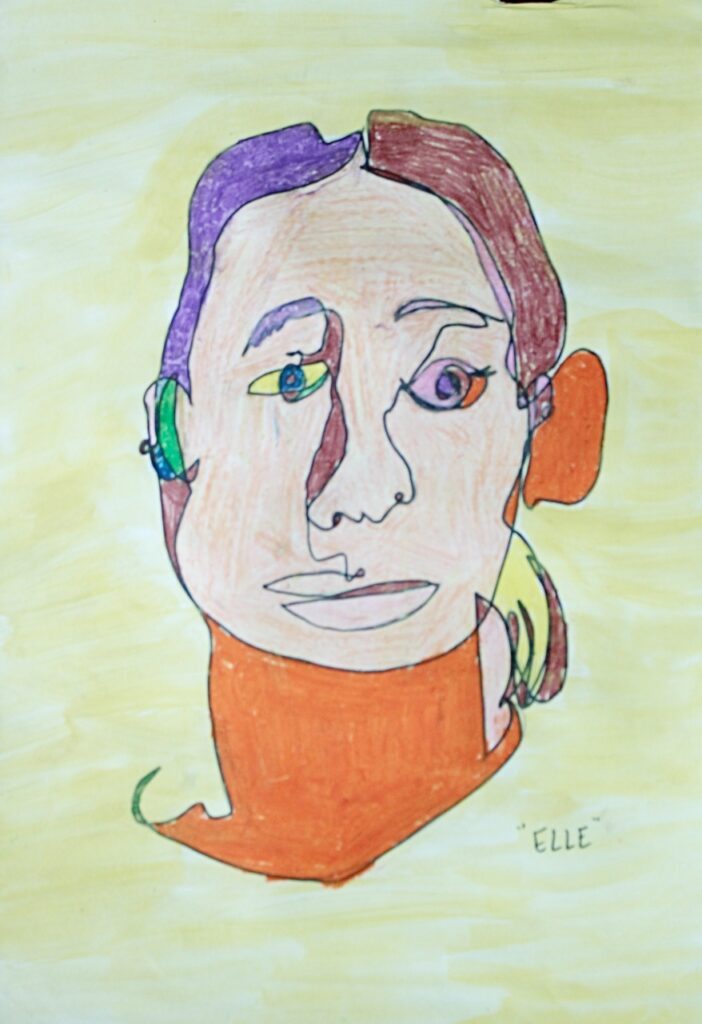
8. Continuous Line Portrait Drawings of Each Other
Continuous line (aka Contour line) drawings are where you draw a portrait without in one continuous line without lifting the pen off the paper. It’s a neat little ice breaker that students will enjoy seeing their wonky depictions of the face they’re drawing. You can demonstrate how to do this by first drawing the face and shoulders of student in one continuous line on the board. Afterwards, students can fill in the spaces with fun colours.


9. Motor skills activity sheets (for the younger children)
Using this Colour, Cut and Copy printable activity sheet is a great way for little ones to immediately feel creative. Get them to colour the shapes in, cut them out and stick them into their sketchbooks. Afterwards get them to copy the same shapes by drawing them on the page next to it. This gives you some insight into their motor skills, and you can assess the ways they approach drawing objects to scale, colouring, and glueing skills.
10. Peer Interview Ice Breaker
Get the students to go around interviewing each other to learn about their class mates favourite colours or favourite type of art etc.
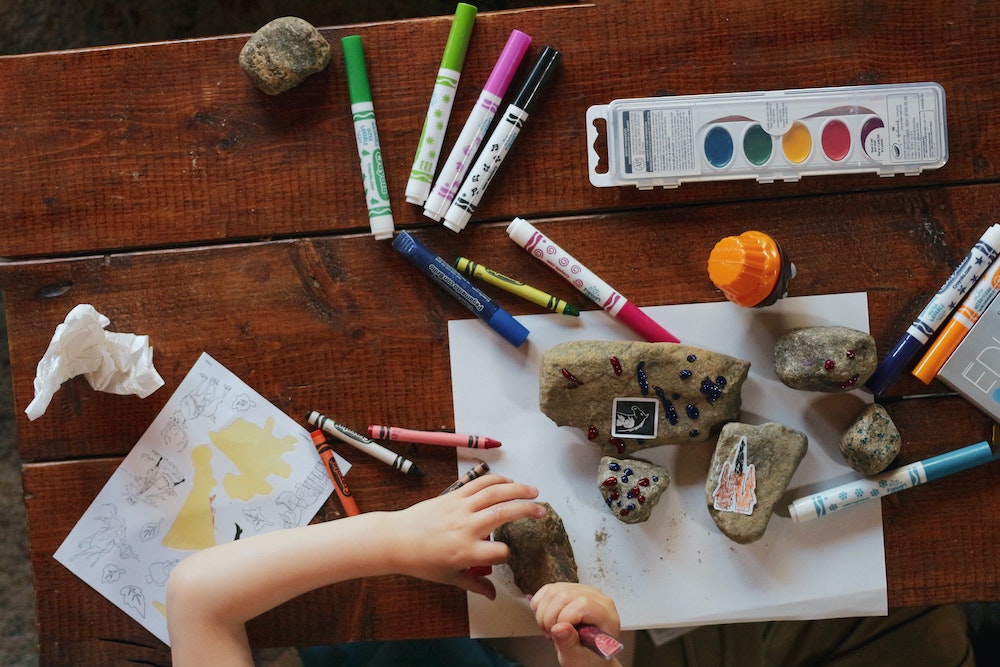
11. Art Stations at each table
Why not set up a different art activity at each table. When kids finish one activity they can go to another table to complete another activity. Although this may be harder to track and assess kids art skills as they work, it will help the kids see right away that there is so much fun to be had in art class this year. I suggest putting a limit to the number of people that can be at an art station at a time.
Be sure to give your students adequate time to get the classroom all cleaned up. Use this time to demonstrate your clean up procedures and expectations.
Tip! Take notes for later
While they work, use this time to see how they interact with one another, and take notes for seating arrangements. With these simple first day art projects you can quickly assess where student’s skills are sitting, and areas of difficulty or general engagement with the projects you have planned for the year.
